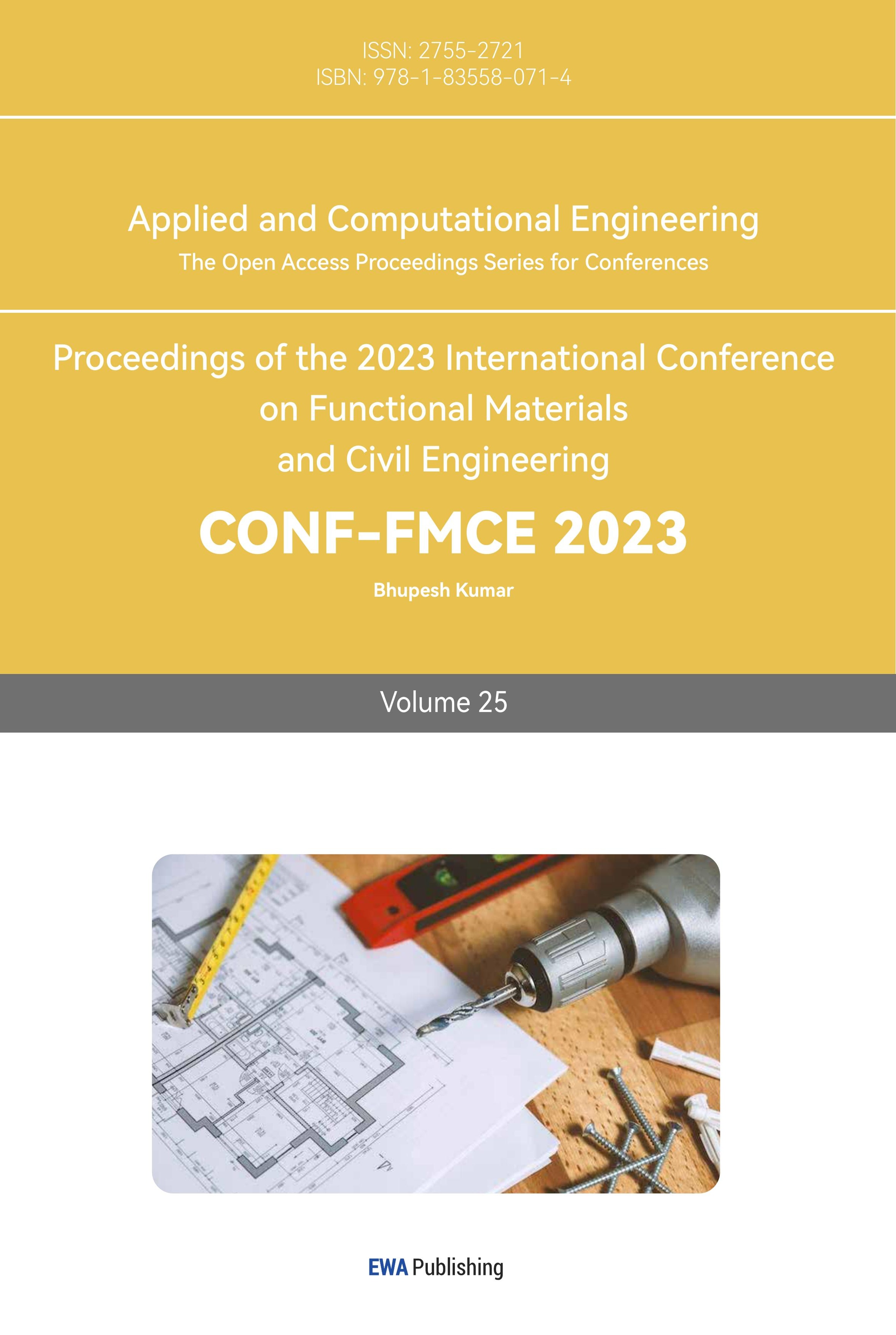References
[1]. Elschner A, Kirchmeyer, S. Lovenich W, et al. 2010 PEDOT: Principles and Applications of an Intrinsically Conductive Polymer (CRC Press, Boca Raton, FL).
[2]. A 2017 Anisotropic expansion of PEDOT/PSS–PAM hybrid films. Zhengzhou: Zhengzhou University. Vitoratos E, et al. 2012, Open Journal of Organic Polymer Materials 27 11.
[3]. Vitoratos E, et al. 2012, Open Journal of Organic Polymer Materials 27 11.
[4]. Sun, et al. 2009 Polymer Materials Science and Engineering, 25(7):111–113, 117.
[5]. Xian Z, et al. 2013, Journal of Beijing Institute of Clothing Technology: Natural Science Edition, 37(1) 18–25.
[6]. Cruz-Cruz I, et al. 2013, Thin Solid Films, 531:385–390.
[7]. Yagci Ö, et al. 2017, Synthetic Metals, 212:12–18.
[8]. Said S M, et al. 2017 Journal of Polymer Engineering, 37(2):163–168.
[9]. Jeong, W. et al. 2020 Biosensors and Bioelectronics,171:112717.
[10]. Xiaoqi Lan, et al. 2019 Advanced Electronic Materials 48:6978–6984.
[11]. Park S, et al. 2011, Current Applied Physics, 11(6):1 299–1 301.
[12]. Syrovy T, et al. 2017, Synthetic Metals, 227:139–147.
[13]. Wilson P, et al. 2013, Organic Electronics, 14(12):3 277–3 285.
[14]. Zhang S, et al. 2017, Organic Electronics, 45:139–144.
[15]. Cheng H, et al. 2017, Materials Technology, 32(10):622–629.
[16]. Illakkiya J T, et al. 2017, Optik, 157:435–440.
[17]. Xie Lan, et al. 2017, China Plastics Industry, 45(2):7–9, 20.
[18]. Pathak C S, et al. 2018, Chemical Physics Letters, 694:75–81.
[19]. Lin J. 2018, Acta Materiae Compositae Sinica, 35(1) 180–184.
Cite this article
Tang,H. (2023). Research progress on the modification of organic highly conductive polymer PEDOT: PSS. Applied and Computational Engineering,25,186-191.
Data availability
The datasets used and/or analyzed during the current study will be available from the authors upon reasonable request.
Disclaimer/Publisher's Note
The statements, opinions and data contained in all publications are solely those of the individual author(s) and contributor(s) and not of EWA Publishing and/or the editor(s). EWA Publishing and/or the editor(s) disclaim responsibility for any injury to people or property resulting from any ideas, methods, instructions or products referred to in the content.
About volume
Volume title: Proceedings of the 2023 International Conference on Functional Materials and Civil Engineering
© 2024 by the author(s). Licensee EWA Publishing, Oxford, UK. This article is an open access article distributed under the terms and
conditions of the Creative Commons Attribution (CC BY) license. Authors who
publish this series agree to the following terms:
1. Authors retain copyright and grant the series right of first publication with the work simultaneously licensed under a Creative Commons
Attribution License that allows others to share the work with an acknowledgment of the work's authorship and initial publication in this
series.
2. Authors are able to enter into separate, additional contractual arrangements for the non-exclusive distribution of the series's published
version of the work (e.g., post it to an institutional repository or publish it in a book), with an acknowledgment of its initial
publication in this series.
3. Authors are permitted and encouraged to post their work online (e.g., in institutional repositories or on their website) prior to and
during the submission process, as it can lead to productive exchanges, as well as earlier and greater citation of published work (See
Open access policy for details).
References
[1]. Elschner A, Kirchmeyer, S. Lovenich W, et al. 2010 PEDOT: Principles and Applications of an Intrinsically Conductive Polymer (CRC Press, Boca Raton, FL).
[2]. A 2017 Anisotropic expansion of PEDOT/PSS–PAM hybrid films. Zhengzhou: Zhengzhou University. Vitoratos E, et al. 2012, Open Journal of Organic Polymer Materials 27 11.
[3]. Vitoratos E, et al. 2012, Open Journal of Organic Polymer Materials 27 11.
[4]. Sun, et al. 2009 Polymer Materials Science and Engineering, 25(7):111–113, 117.
[5]. Xian Z, et al. 2013, Journal of Beijing Institute of Clothing Technology: Natural Science Edition, 37(1) 18–25.
[6]. Cruz-Cruz I, et al. 2013, Thin Solid Films, 531:385–390.
[7]. Yagci Ö, et al. 2017, Synthetic Metals, 212:12–18.
[8]. Said S M, et al. 2017 Journal of Polymer Engineering, 37(2):163–168.
[9]. Jeong, W. et al. 2020 Biosensors and Bioelectronics,171:112717.
[10]. Xiaoqi Lan, et al. 2019 Advanced Electronic Materials 48:6978–6984.
[11]. Park S, et al. 2011, Current Applied Physics, 11(6):1 299–1 301.
[12]. Syrovy T, et al. 2017, Synthetic Metals, 227:139–147.
[13]. Wilson P, et al. 2013, Organic Electronics, 14(12):3 277–3 285.
[14]. Zhang S, et al. 2017, Organic Electronics, 45:139–144.
[15]. Cheng H, et al. 2017, Materials Technology, 32(10):622–629.
[16]. Illakkiya J T, et al. 2017, Optik, 157:435–440.
[17]. Xie Lan, et al. 2017, China Plastics Industry, 45(2):7–9, 20.
[18]. Pathak C S, et al. 2018, Chemical Physics Letters, 694:75–81.
[19]. Lin J. 2018, Acta Materiae Compositae Sinica, 35(1) 180–184.









